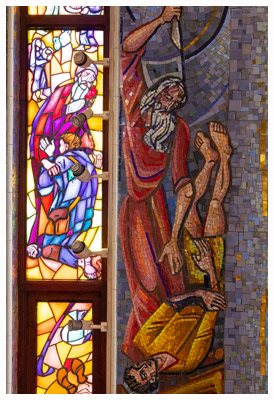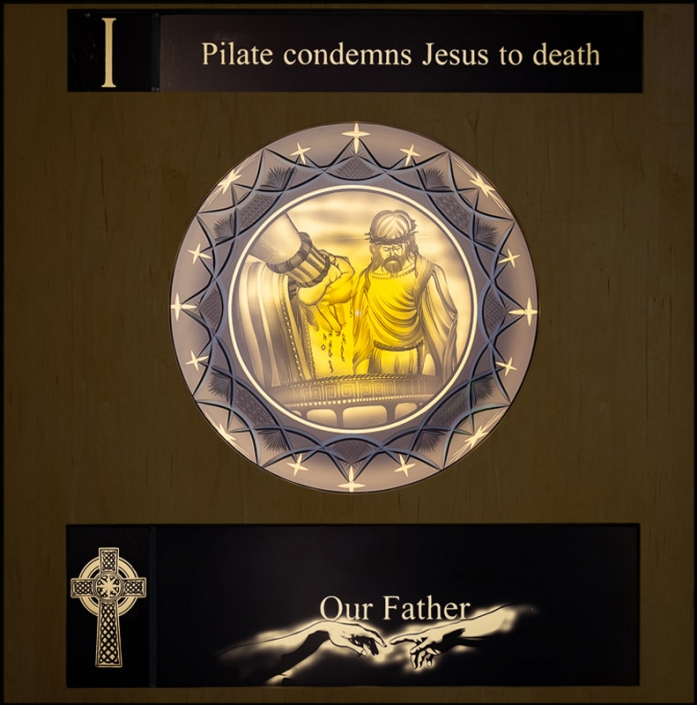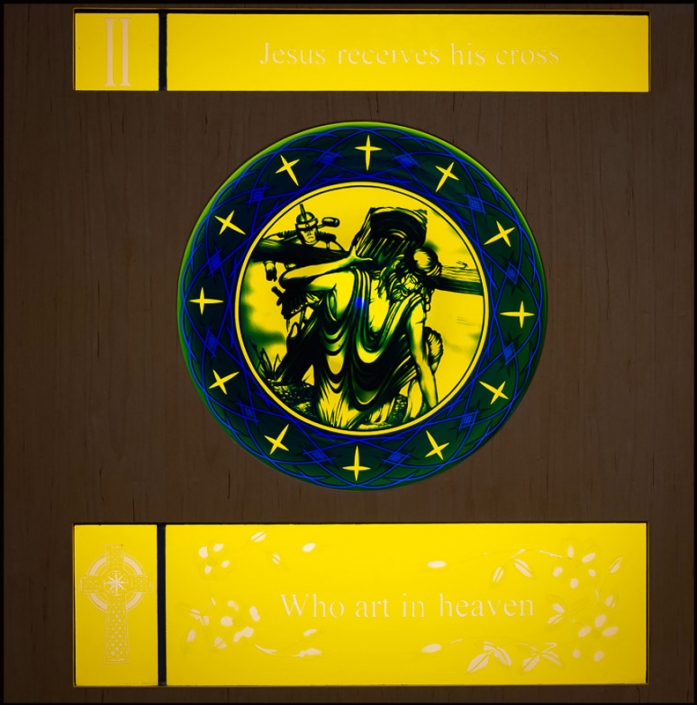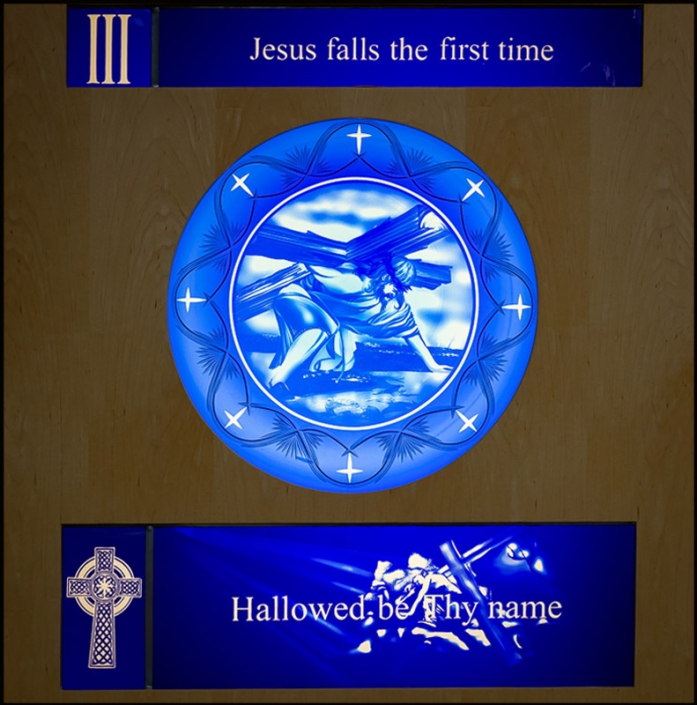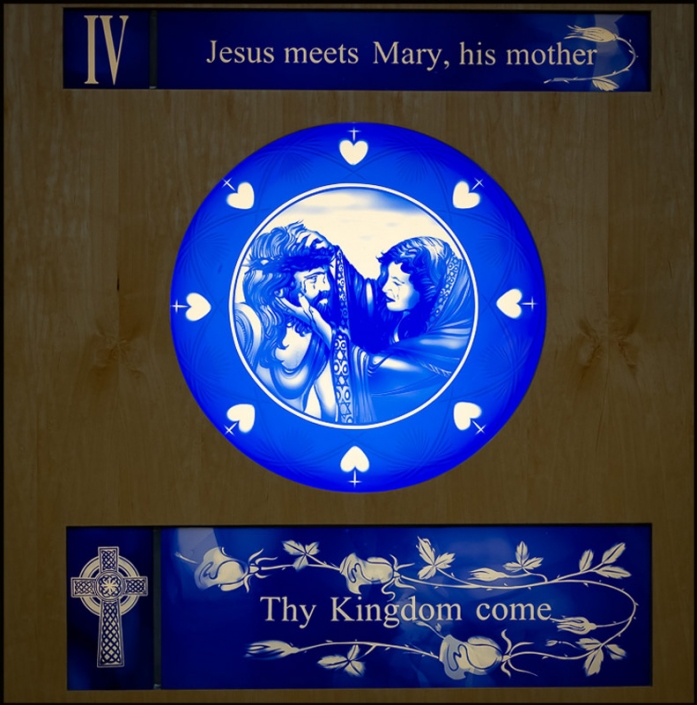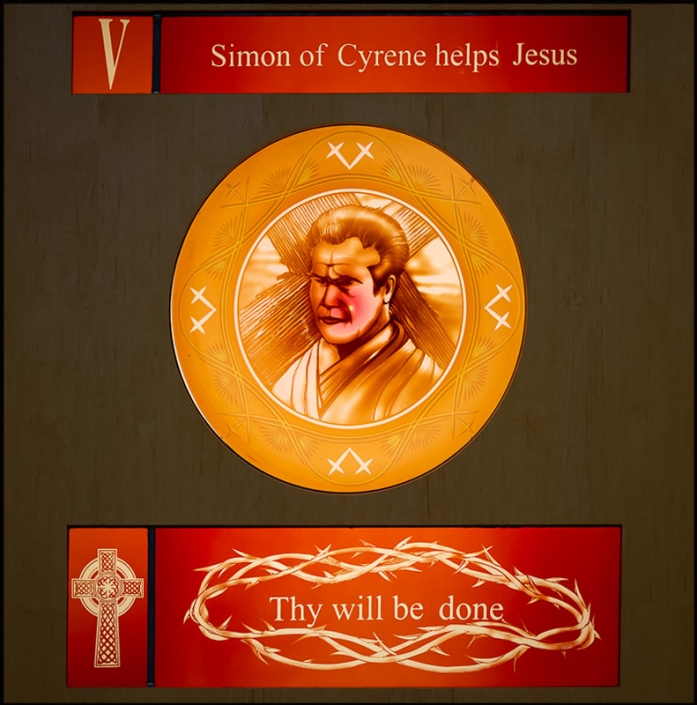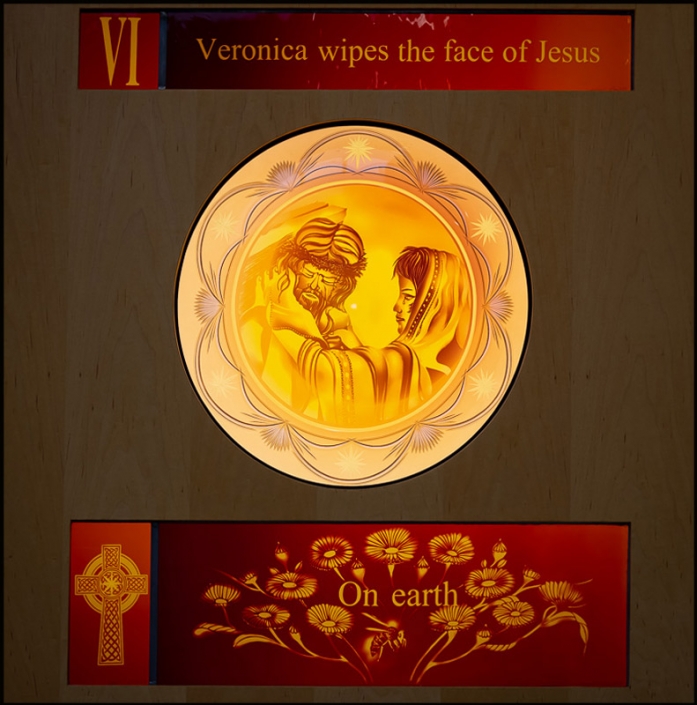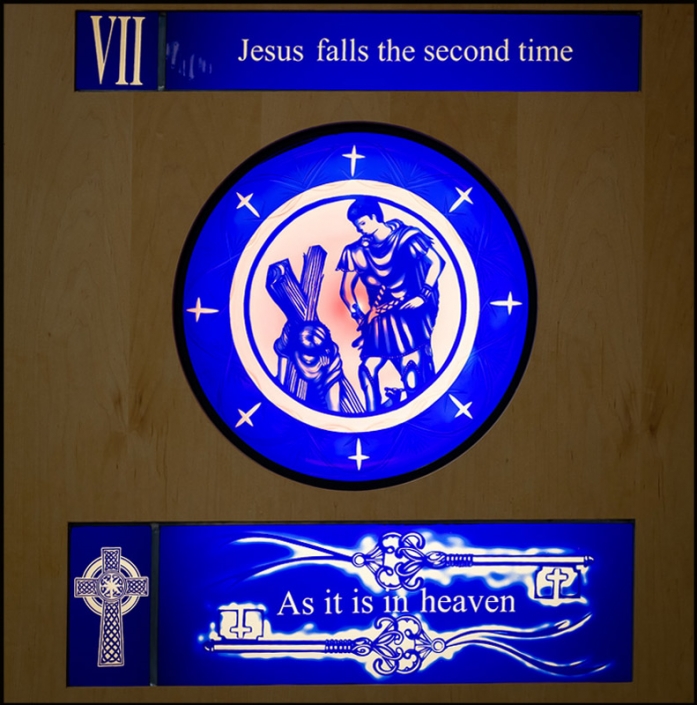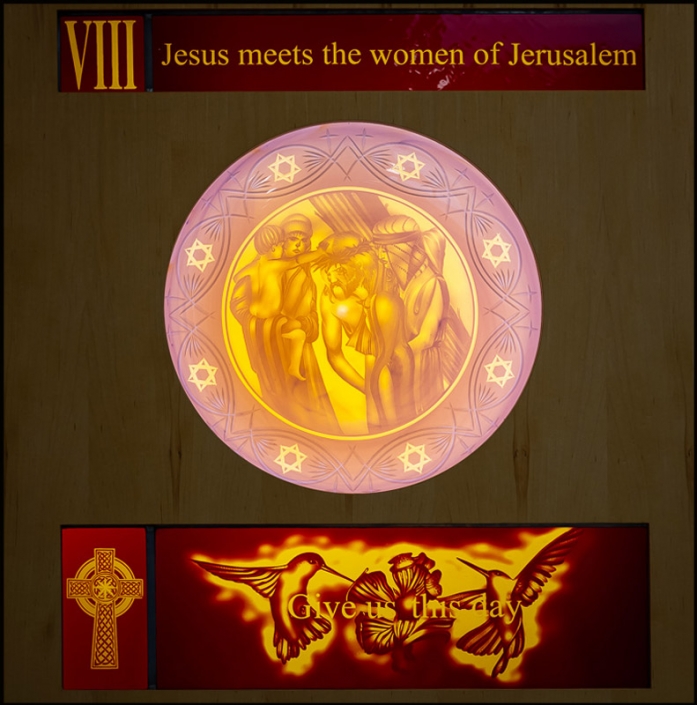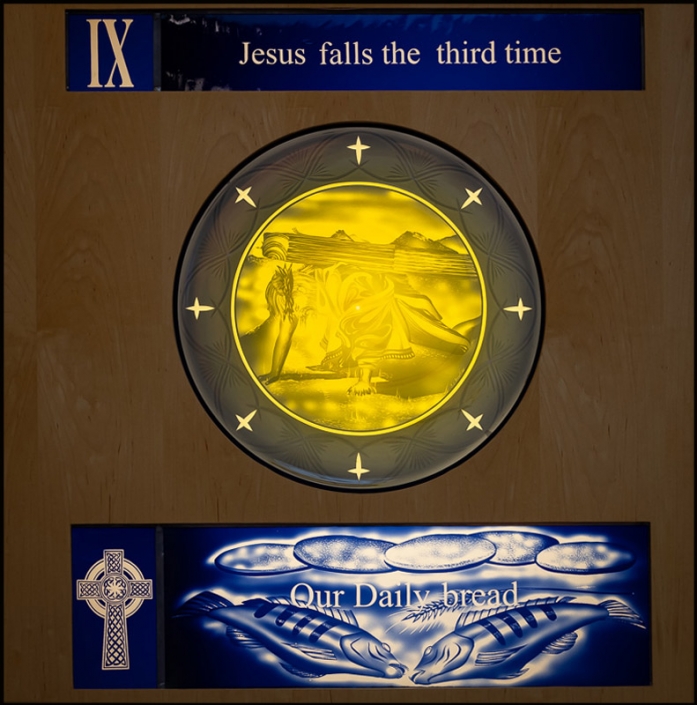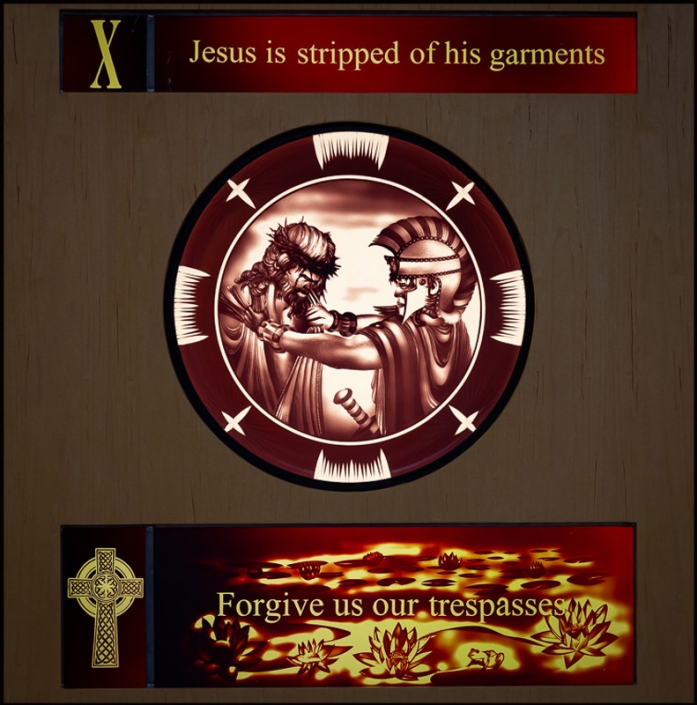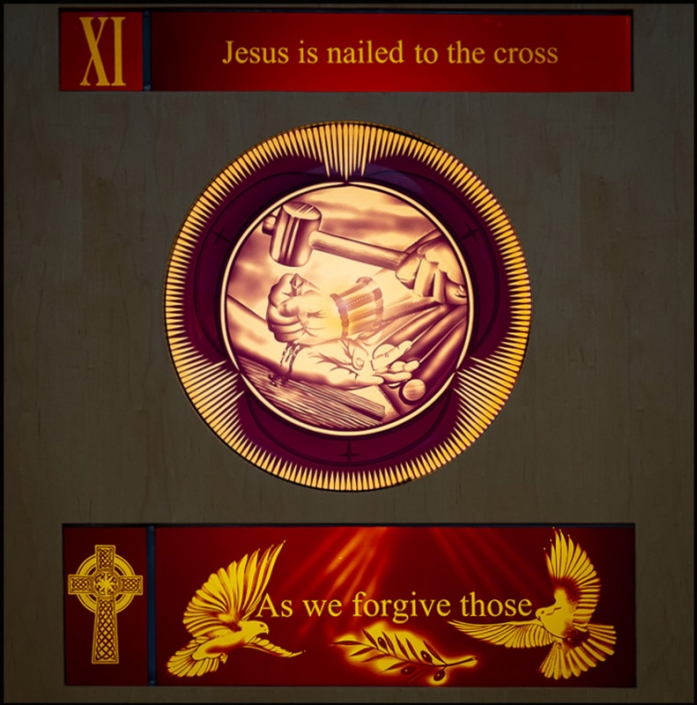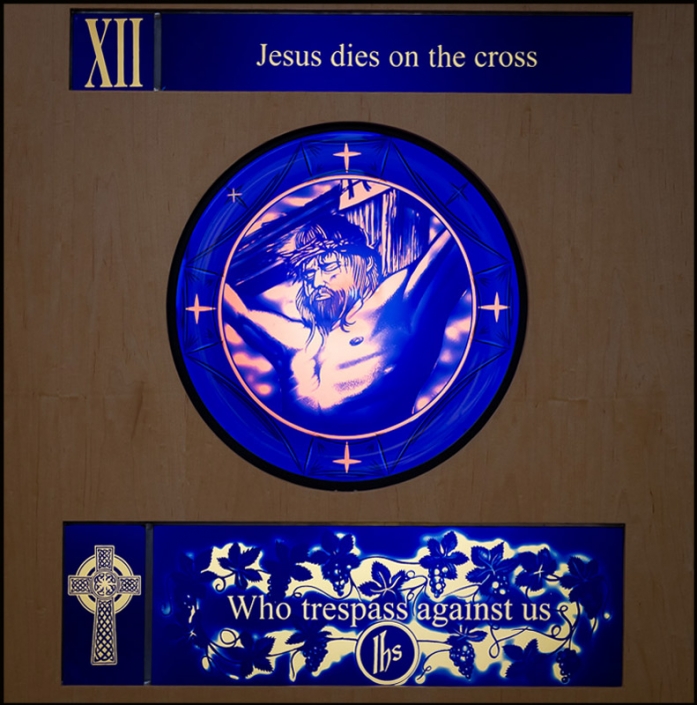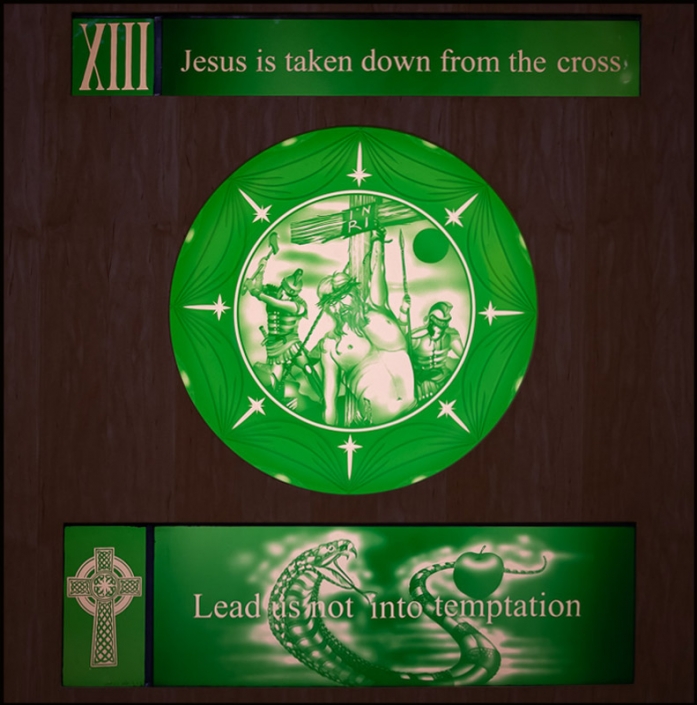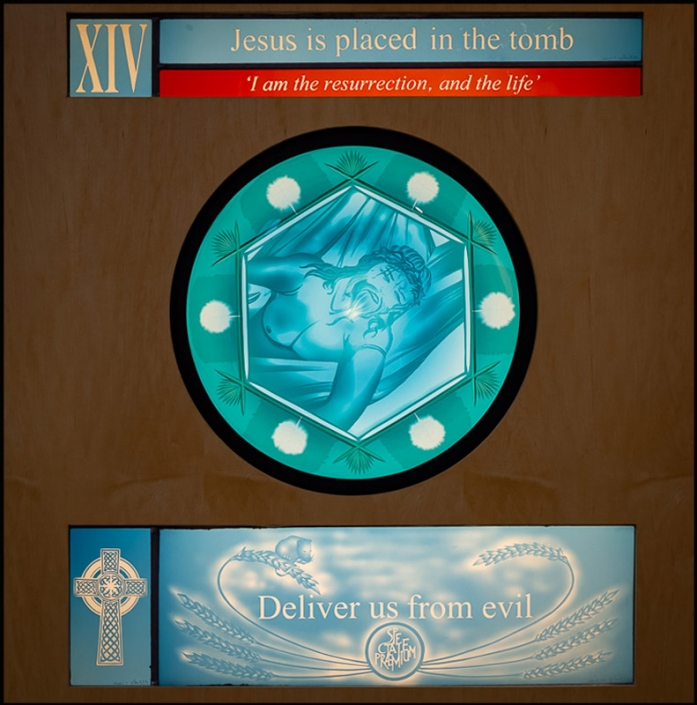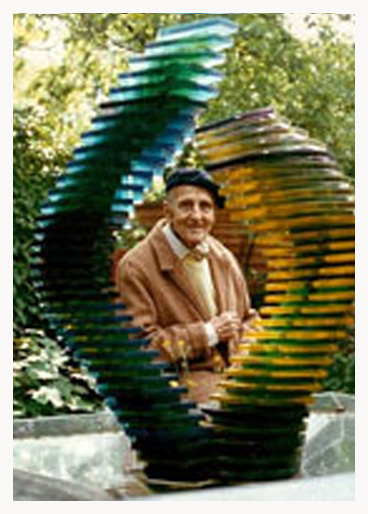
Arthur Fleischmann was born in Hungary. After qualifying as a doctor he turned to sculpture as a profession taking up a scholarship in Vienna. His work took him to Italy, Paris, South Africa, Bali, Australia – eventually he settled in London. He worked in all mediums: wood, bronze, stone, but is the pioneer of Perspex as a sculpture medium. He was excited by the translucent qualities of acrylic and his unique style won him commissions throughout the world: The Risen Christ for the Vatican, Bronze Doors for the Mitchell Library in Sydney, Bronze Fountain for the Government House in Canberra, Perspex Water Sculpture for Japan, and in 1977 his “Crystal Crown” carved out of a massive block of acrylic was unveiled by the Queen in St. Katherine Dock, London, in celebration of her Silver Jubilee. He is the only artist in history to have been invited to sculpt four Popes from life: Pius XII, John XXIII, Paul VI & John Paul II.
His suite of Sanctuary Furniture: The Altar, The Lectern, The two Candelabra, The Crucifix and The Baptismal Font were the property of the Archdiocese of Westminster and were on display at an exhibition in the crypt of Westminster Cathedral when The Times art’s correspondent wrote a feature describing their special quality. Fr. Gregory Grant began negotiations with H.E. Cardinal Basil Hume and the artist’s widow, Mrs Joyce Fleischman, and the pieces were donated to the New Church as a gift in memory of the artist.
The stained glass windows in the Church are a blend of the old and new. The three lancet crucifixion scene was moved from the old St. Patrick’s Church to its present position. The two large circular windows were commissioned from new especially for the Church.
All of the work – restoration, relocation and new design – was done by the Bristol Firm Creative Glass.
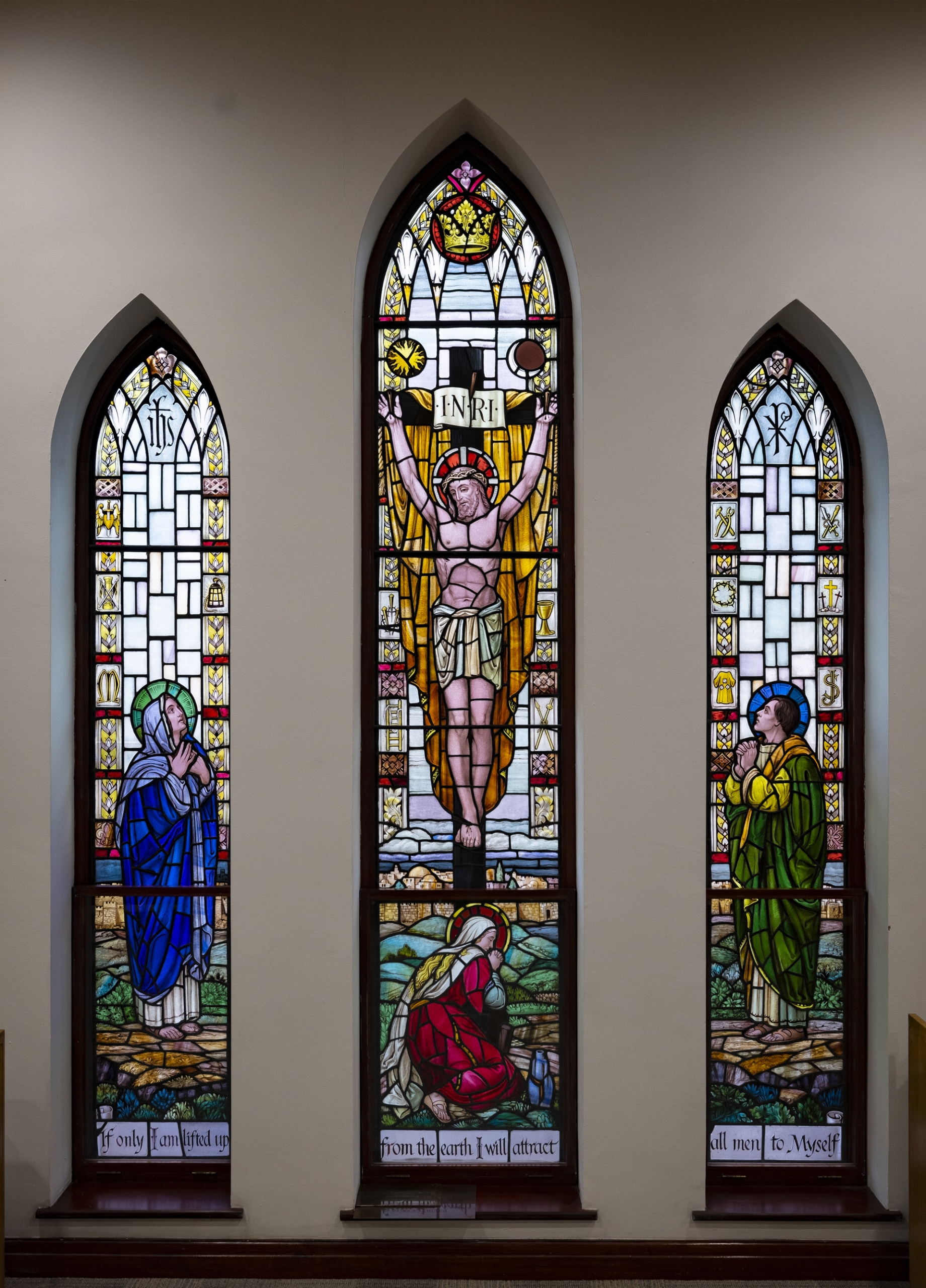
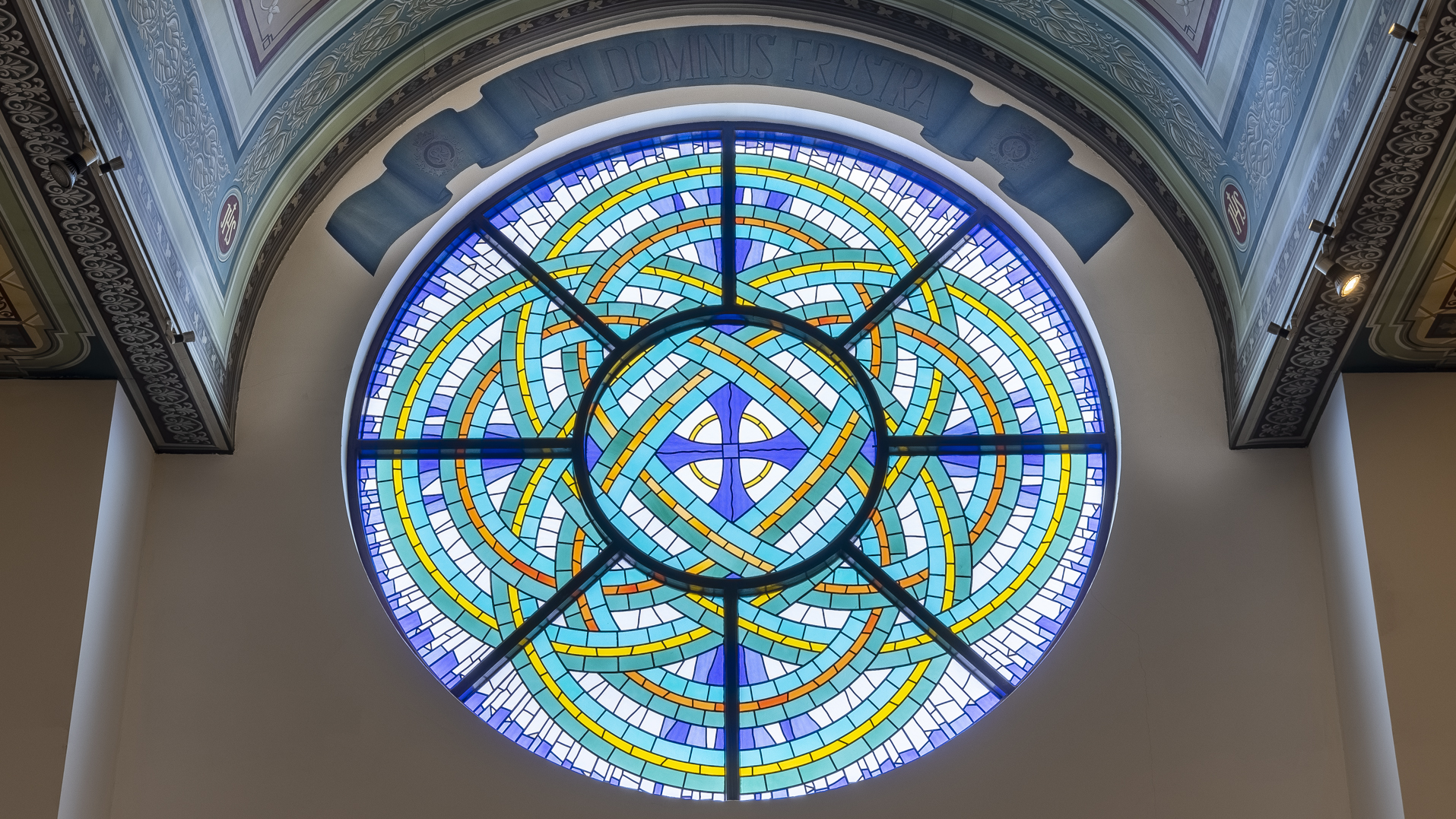
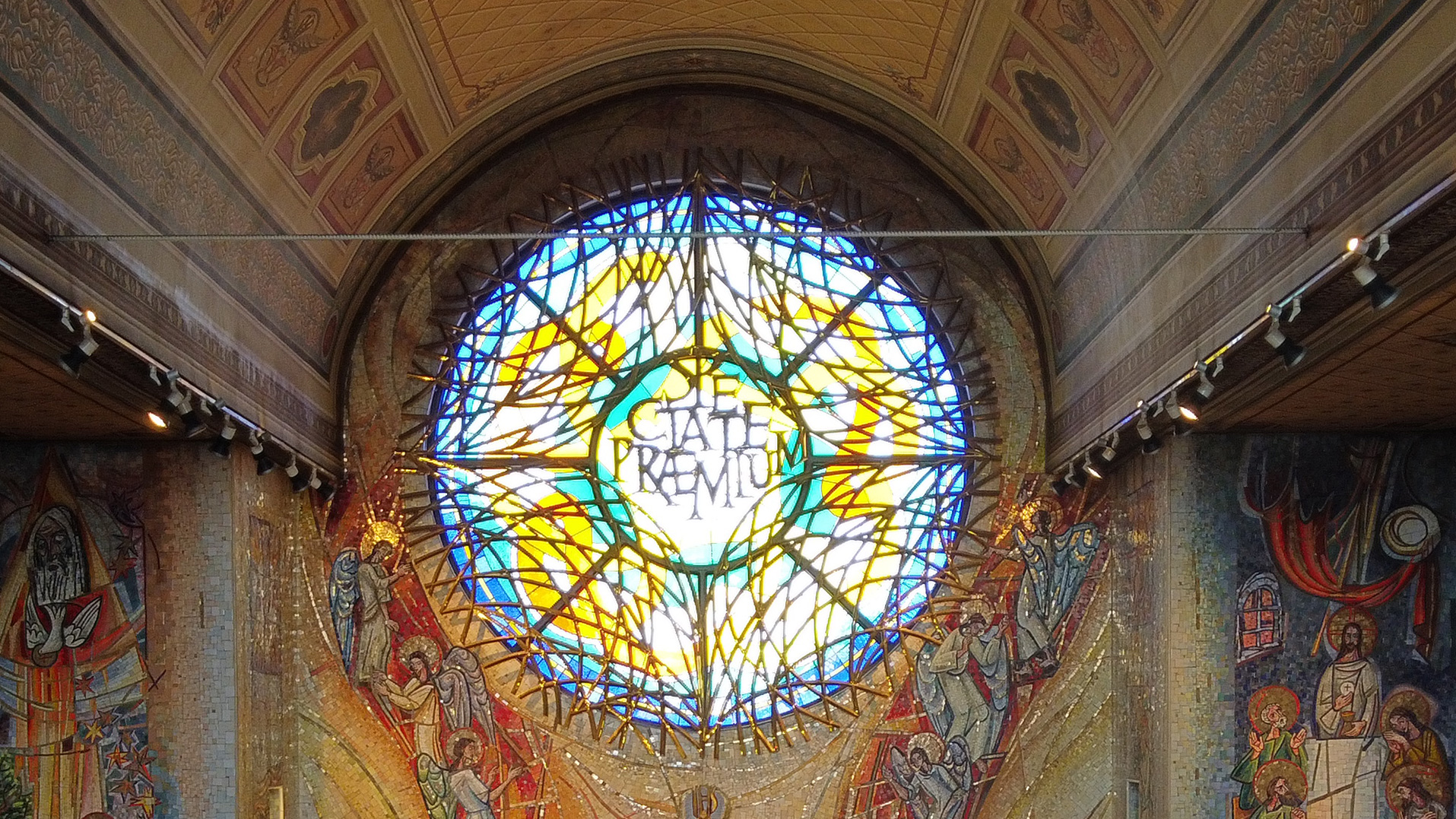
The stained glass windows in the Church are a blend of the old and new. The eight windows of the saints were taken from the disused catholic cathedral in Bristol which is in a state of dereliction in Clifton.
All of the work – restoration, relocation and new design – was done by the Bristol Firm Creative Glass.
Click on any of the thumbnails for a larger photo.
St. George
St. Patrick
St. William of York
St. Hugh of Lincoln
Blessed Richard Whiting
St. Ambrose
Blessed Margaret Pole
St. Wulstan
The Six Wall Paintings
Ramon Gaston
One of the dominant features of the new Church is the series of six paintings by the Philipino artist, Ramon Gaston. This international portrait painter, famous for his studies of leading public figures – President and Mrs. Marcos, President Corrie Aquino, President Bush, The Chancellor of Germany – devoted four and a half years to work exclusively on this commission for the new Church.
If you put the paintings side by side they would measure 80ft by 10ft, almost 100 square metres! They are all oil on canvas and stretched over wood frames before being hoisted into position.
The paintings are based on scripture texts and catholic tradition and feature the Virgin Mary as the unifying theme of the series.
Click on any of the thumbnails for a larger photo.
The_Annunciation
The-Return
The-Wedding
Jesus-Commissions
The-Coronation
The-Ascension-
Standing facing the altar and turning to your left the themes from right to left are:
1. The Annunciation : Mary and The Angel Gabriel. Based on the text from Ephesians – “Take the sword of the Holy Spirit which is the Word of God.”
2. The Return to Israel : Jesus, Mary and Joseph leave Egypt to go back to Israel following the death of King Herod. “Out of Egypt I have called my Son.”
3. The Wedding Feast of Cana : Mary asks Jesus to change the water into wine. “The mother of Jesus said to him, they have no wine.”
4. Jesus Commissions the Disciples : Jesus tells his disciples to preach and the Virgin is performing her first miracle as the lame girl’s crutch falls away. “Go out to the whole world and proclaim the good news.”
5. The Coronation of the Virgin as Queen of Heaven : The Virgin Mary is surrounded by Jesus and her parents, his grandparents, Anna and Jacob, as she is honoured as The Queen of Heaven.
6. The Ascension of the Virgin into Heaven : The Virgin Mary is taken up into Heaven at the end of her life on Earth. She is being received by the three angels, Faith, Hope and Charity. Her Assumption is watched by People on earth on the right of the painting and the souls in Hell on the left who are interceding to her for prayers for their salvation.
The artist used many parishioners as models in this series as well as his own family and friends. The paintings took four and a half years to complete.
The Ceiling and Triptych
Dimitri Pascari
These were both created by a Romanian artist Dimitri Pascari. The intricate ceiling design was painted freehand, without templates or rulers! The artist used tempera paint, a medium he has used in many churches in Rome. The Triptych depicts the last supper and is painted in the Byzantine style.

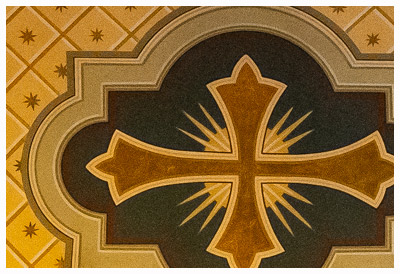

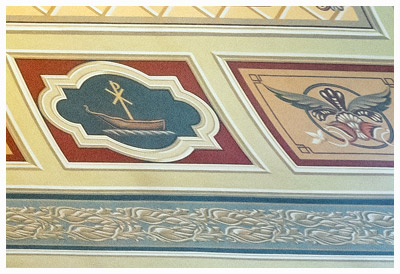
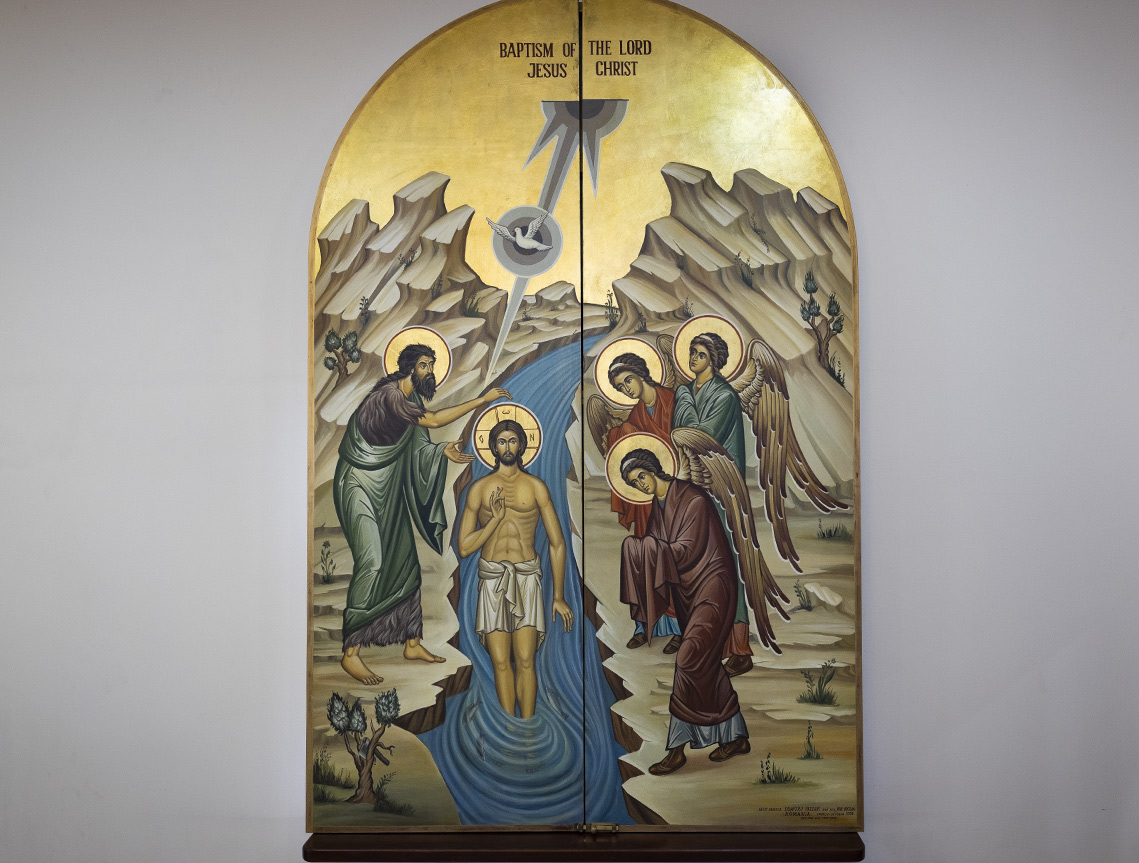
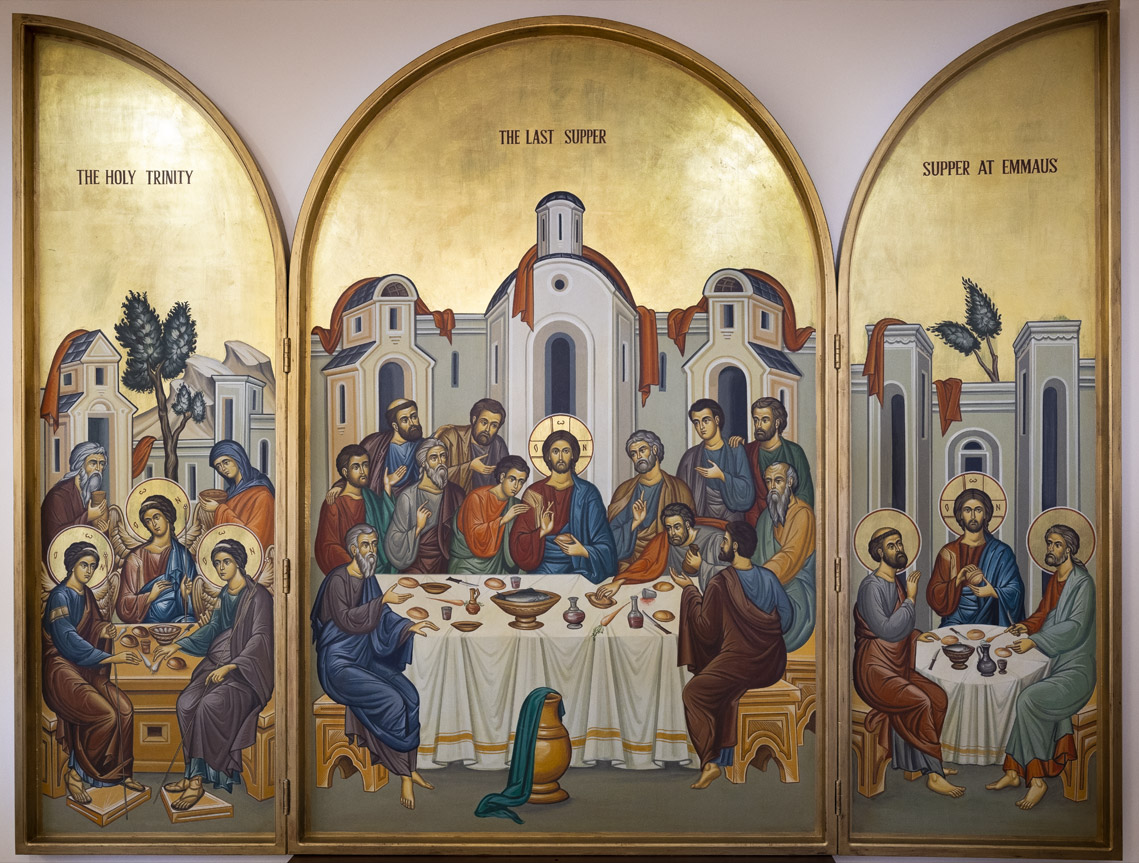
The Mosaics
Maciej and Piotr Kauczyski
The mosaics were created by the Polish artists Maciej and Piotr Kauczyski, both of whom are undergraduates of The Academy of Arts in Kracow. In honour of his work all over the world, Maciej was decorated with the St Sylvester Order by Pope John Paul II.
The Mosaic on the back wall depicts the story of the dream of Jacob: “he dreamed that there was a ladder set up on the earth, and the top of it reached to heaven; and behold, the angels of God were ascending and descending on it!”
On the left of the Altar, John the Baptist is depicted baptizing his cousin, Jesus, in the River Jordan. The Holy Spirit descends as a dove from Heaven. On the right is the Last Supper. Judas is the only apostle without a halo and is holding a bag of money.
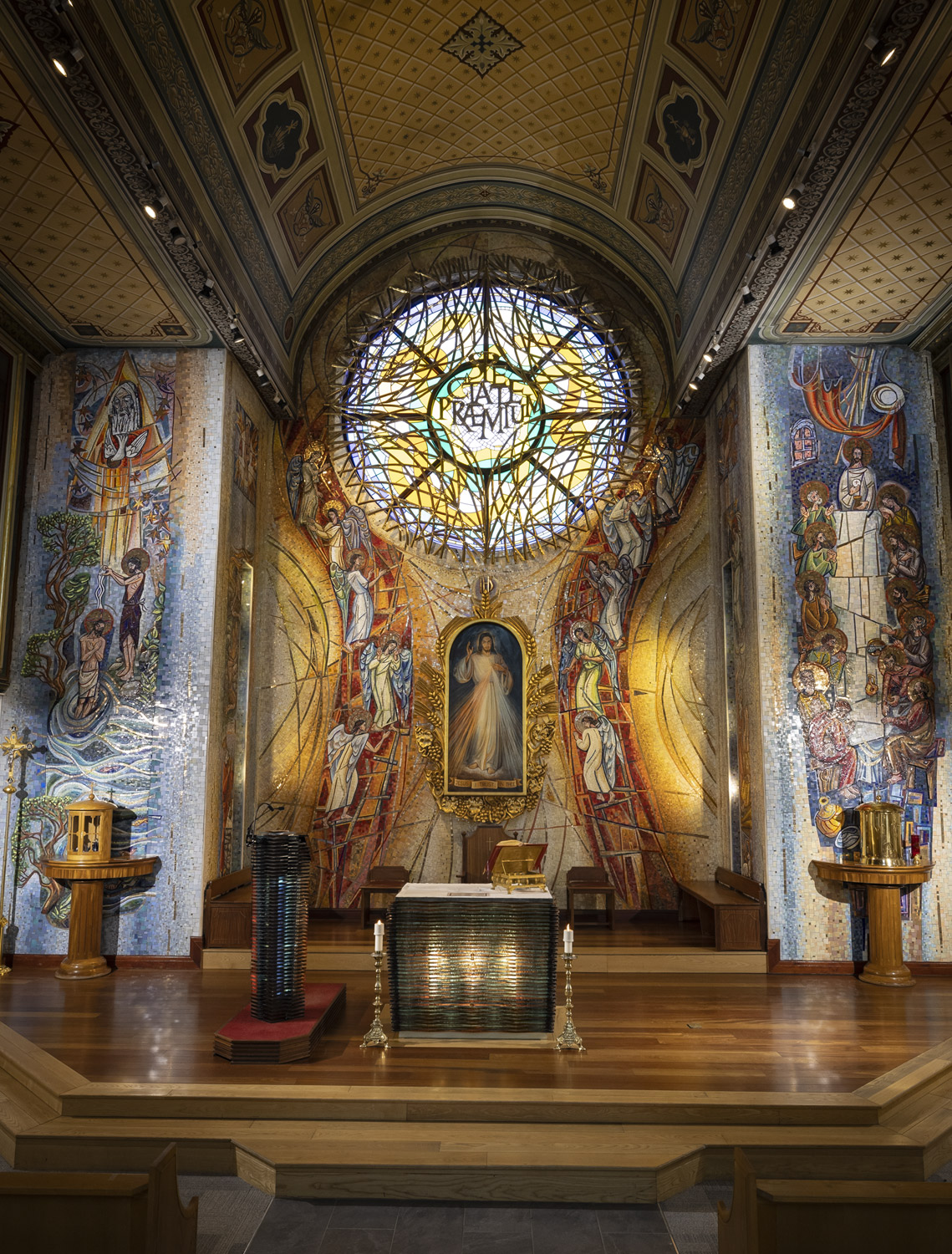
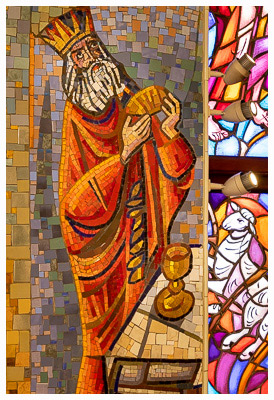
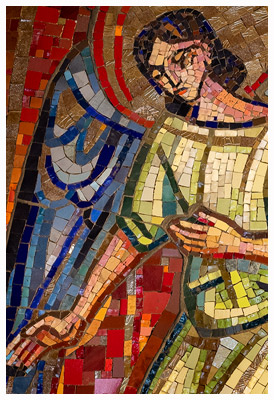
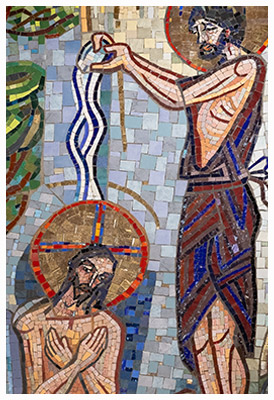
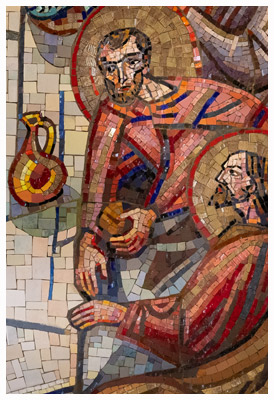
Stephen Bradley
Stephen Bradley Is one of the Country’s leading experts in glass engraving. He won National acclaim when he sculpted his “Arthur Vase” – on display in the Shore Gallery of St. Patrick’s Church. Following an exhibition of the artist’s work in Kensington, London, he was commissioned by Canon Gregory Grant to sculpt the Fourteen Stations of the Cross that depict the last few hours of the life of Christ from his condemnation by Pontius Pilate to his Crucifixion. Because of the fragile nature of the medium, the artist had to make 42 plates (created by fusing two different colours of glass together) – 28 cracked or broke at various stages in their development – including some that were almost complete. The work took two and a half years to finish.
Stephen was a lecturer in glass engraving at the Royal College of Art at the time of his commission. Both he and his brother – Andrew Bradley – trained in glassmaking at Stoke-on-Trent. Andrew assisted Stephen in the task of The Stations of The Cross by decorating the outer rims of the plates with engraved work. At the opening of the Church the two brothers donated as a gift this series of work in memory of their father.
Stephen Bradley also created the two Holy Water Stoops in the Narthex, inscribed with the words taken from St. Peter and carved around the Baptismal Font in Clifton Cathedral. He also created the magnificent crystal chandelier in the Narthex.
In 1995 the two brothers, Stephen and Andrew, formed their own business, workshop and gallery in Beccles, Norfolk, where their ability at restoration as well as their unique creative talent is gaining wide recognition throughout the country.







